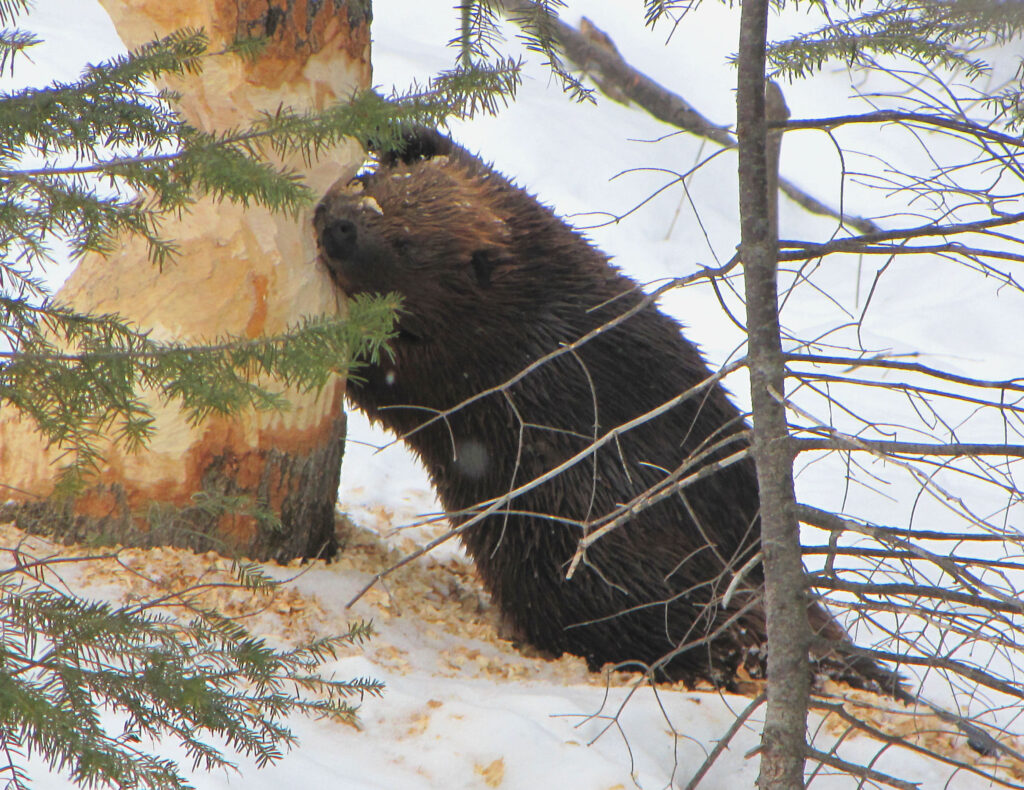Dana Little
Beavers love Taylor Pond and can often be seen cruising along the shoreline. They can be a delightful sight, but they may also cause trouble. Homeowners are naturally exasperated when they flood a driveway or landscaping by damming up flowing water. Their habit of cutting down trees for food or to construct their homes or dams can be annoying if the tree they chose is one you just planted. A few years back, I purchased and planted a 16-foot Red Oak in my front yard. Within days it was beaver food—a short stick with no bark and the guy lines still attached.

Although beavers can cause localized flooding with their dams, they are not the cause of flooding in Taylor Pond. There are multiple beaver dams in Taylor Brook beyond Hotel Road, and they help to slow down water flow and keep water levels higher during low rainfall periods. During high rainfall periods water easily flows over the top of beaver dams, which helps to prevent flooding. Taylor Pond Association hired an engineer in 2018 to analyze the reasons for flooding. He attributed it to three obstructions: water flow, (namely a narrow Hotel Road culvert which has since been replaced with a spacious bridge), the Kendall dam and the narrow culvert under the Stevens Mill Road extension that accesses the Kendall property. These obstructions to water flow, unlike the beaver dams, do not allow overflow of water and therefore contribute to flooding.
Another benefit of beaver dams is to slow the flow of water into Taylor Pond. There are at least two beaver dams on Lapham Brook between Youngs Corner Road and the entrance to Taylor Pond and one on Hodgkins Brook between Perkins Ridge Road and the pond. These beaver ponds help settle any sediment that the brook might carry and naturally filter out the phosphorus that could enter the pond. By slowing the flow of water, they also reduce erosion of soil into the pond that can carry phosphorus.
The small ponds that beavers create attract a large diversity of wildlife. Warm-water fish ply the waters, frogs line the shores, mink hunt around them, herons and kingfishers seek them out to feed and otters prefer their quiet waters.
If we removed all beavers from the waterways around Taylor Pond, we would experience more flooding and poorer water quality. In addition, we would see a decline in the biodiversity of our local environment. So, how do we deal with the nuisance they cause? First, be aware that according to Maine’s Department of Inland Fisheries and Wildlife, “It is illegal to destroy or damage a beaver house or a beaver dam.” Your best action is to call the local game warden to find a solution. If indicated, a game warden may kill a beaver or destroy the dam that is causing a problem. I have found that encircling trees with turkey wire to a height of three feet suffices to keep the beaver from chewing down my prize trees. To learn more about beavers and avoid conflict I recommend reading the “Living with Wildlife” section on Beavers at the Inland Fisheries &Wildlife website.